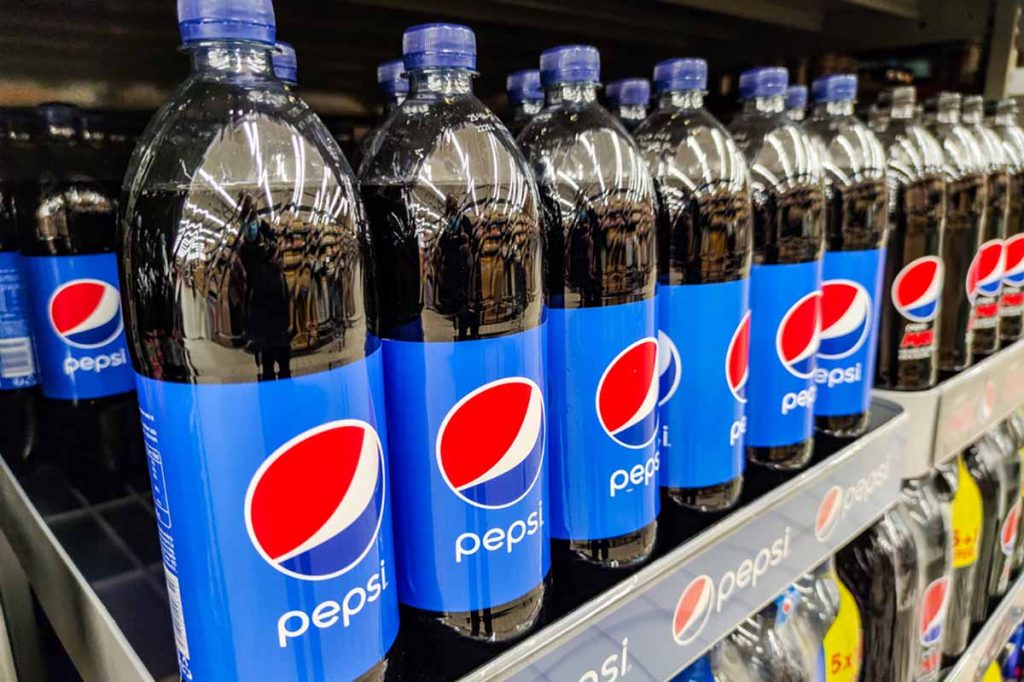
A report from the Ellen MacArthur Foundation reveals that major brand owners and retailers increased their use of PCR from 10.0% in 2021 to 11.7% in 2022. One of the largest, PepsiCo, increased from 6.3% PCR to 7.3%. | pixinoo/Shutterstock
The fifth report from the Ellen MacArthur Foundation found that a few big-name brands’ increased use of virgin plastic has been offsetting the overall reduction achieved by the rest of the reporting companies.
Businesses can voluntarily sign the Global Commitment, which sets ambitious 2025 targets and then requires the businesses to publicly report on their progress or lack thereof.
“It is clear, both from this year’s data and taking the longer-term view over the last five years, that the Global Commitment has shown it is possible to make meaningful progress in tackling plastic waste and pollution,” the 2023 report noted. “It is equally clear that the world remains off-track.”
The foundation also published a report looking back at the five years since the Global Commitment was launched, noting that “now is the right time to reflect upon progress to date.”
“With only two years to go, the development of the Global Commitment beyond 2025 is about to start – and will be informed by all the lessons learned thus far,” the report noted.
That includes the implications of the foundation’s work on the UN’s international legally binding instrument and other policy efforts, the role of voluntary initiatives versus binding regulations and the future of the Global Commitment.
“The learnings so far reinforce the need for more, and more ambitious, binding policy measures, as well as accelerated voluntary business action,” the document stated. “This cannot be an either-or: both are crucial to tackling plastic waste and pollution at the pace and scale required.”
It added that the international legally binding instrument on plastic pollution “presents a once-in-a-generation opportunity to meet the scale of the challenge and accelerate global change.”
Increasing overall plastic use
According to the report, 65% of brands and retailers have reduced their output of virgin plastic packaging since 2018, with the top quartile collectively reducing it by 13%. However, the report also notes, “Overall progress has been held back due to an increase in virgin plastic packaging use by a few large organizations.”
In 2021, the signatories used 11.8 million metric tons of virgin plastic, and in 2022 they used 11.9 million metric tons.
For example, The Coca-Cola Company used 3.40 million metric tons of plastic packaging in 2022, 2.9 million tons of it virgin. That’s an 8% decrease since 2019, but an increase from 3.22 million metric tons of plastic in 2021. It did increase its use of PCR from 13.6% to 14.9% in 2022.
PepsiCo also used more plastic in 2022, clocking in at 2.60 million metric tons of plastic packaging, 2.40 million of it virgin. That’s the third year of increases for the company, which reported using 2.50 million metric tons of plastic packaging in 2021 and 2.35 million metric tons the year before.
About 7.3% of PepsiCo’s total plastic used was PCR, up from 6.3% in 2021.
Despite that, the signatory group as a whole has maintained a “broadly flat use of virgin plastic” since 2018, the report found, in contrast to the 11% increase seen in the market as a whole over the same time period.
Of the brand and retailer signatories who set 2025 virgin plastic reduction targets, 27% are on track or have already achieved them, the report stated.
And for the fifth consecutive year, brand and retail signatories increased their use of PCR content at a steady rate, rising from 10.0% in 2021 to 11.7% in 2022. Compared to the 2018 baseline of 4.7%, the brands involved with the foundation have nearly doubled their use of PCR, while the overall market has only increased PCR use by about one percentage point in the same time frame.
“Continuing on this trajectory would lead to ~17% recycled content by 2025, more than tripling versus 2018, yet below the group’s aggregate target of 26% by 2025,” the report noted.
The 2023 report covered 123 businesses: 89 retailers, packaging producers and packaged goods companies; 21 collecting, sorting and recycling companies; nine suppliers to the plastic packaging industry; nine raw material producers of non-compostable plastics; and three raw material producers of compostable plastics.
Six left the signatory group in the past year “as a result of being unwilling to fulfill mandatory requirements for participation,” the report noted. Those were Multi-Color Corporation, Futamura Chemical, Paccor, Jiangxi Green Recycling, Umincorp and Suzhou Jiulong Recycling.
The following are details on PCR use by worldwide packaged goods companies, broken down by sector and organized from largest user of plastic packaging to smallest:
Beverage companies
- The Coca-Cola Company: 14.9% PCR in 2022, up 1.3 percentage points from 2021.
- PepsiCo: 7.3% PCR, up 1.0 pp.
- Diageo: 6.8% PCR, up 3.6 pp
Cosmetics
- L’Oréal: 26.5% in 2022, up 5.5 percentage points from 2021.
Food and snacks
- Nestlé: 7.7% in 2022, up 3.1 percentage points from 2021.
- Danone: 11.9%, up 1.3 pp.
- Mars, Incorporated: 1.0%, up 1.0 pp.
- Mondelez International: 1.0%, up 0.5 pp.
- Kellogg Company: 2.5%, up 2.5 pp.
- FrieslandCampina Nederland: 2.8%, up 0.5 pp.
Household and personal care
- Unilever: 20.8% in 2022, up 3.2 percentage points from 2021.
- Henkel AG & Co.: 15.4%, up 1.1 pp.
- Colgate-Palmolive Company: 14.6%, up 0.4 pp.
- SC Johnson: 22.0%, up 2.8 pp.
- Essity AB: 10.0%, up 5.0 pp.

